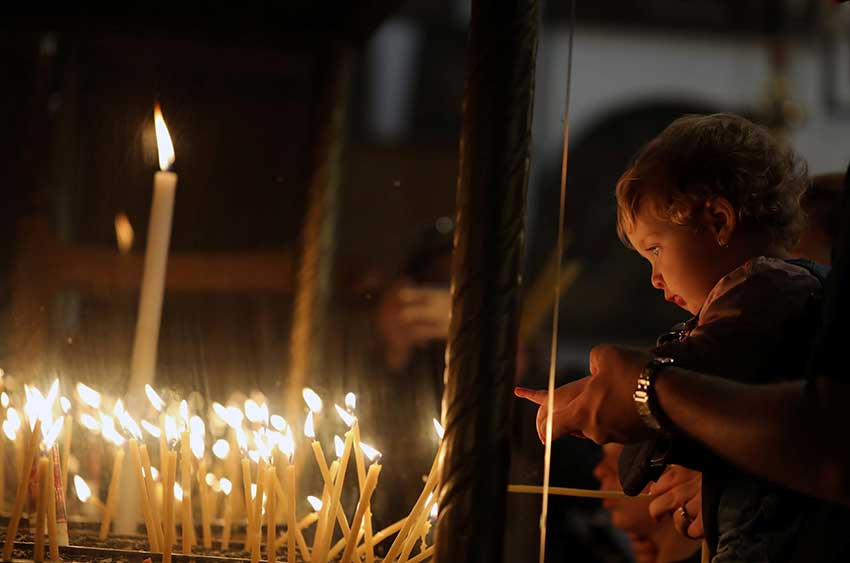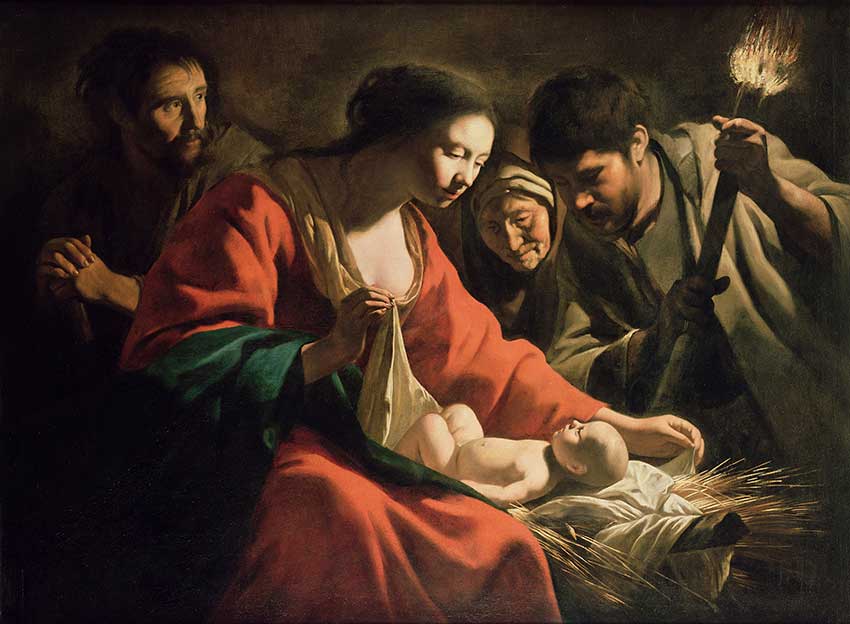
When my first child was born, I heard my mother ask the doctor, “Is it a girl or a boy? A girl or a boy?” I didn’t hear the answer, because I was too busy shouting, “IT’S A BABY. IT’S A BABY!” A real, live, actual baby, with a head and legs, and making noise, and with a *face*! An actual baby, of all things, had come out of me! I couldn’t believe it.
It’s hard to explain why this came as such a shock, after 38 weeks of preparation, but I never forgot it. For subsequent children, I was more prepared for the insistent realness of the new baby, and wasn’t as thoroughly gobsmacked by the brazen individuality of each brand new person.
But still, at each birth, I had an adjustment to make. I had to tell myself, over and over as I recovered from childbirth, “*This* baby . . . is *the* baby.” The baby I had felt rolling and jabbing and squirming and wrestling inside me: That was *this* baby, and here are her same elbows, and these are those actual knees, and here are the helpless little shoulders, the same shoulders. Now I see her.
Despite all the probes and scans we can do, the womb is a private place, and it keeps secrets. What happens in there is real, as the child strengthens and grows, changes and becomes; but how exactly it happens is not mine to know or see, even though it is so very personal.
The eyes have it
And so after the childbirth, I always had to play catch-up, struggling to affirm the continuity of who this child is and who she always had been. What helped the most was just looking into her face. A newborn’s face quiets all questions.
The irony is, of course, that as soon as you get yourself to realize that this new child is your actual child, and you see her for the first time with your very own eyes, you realise that she is still becoming.
Just getting started, really. She is real, but the work of becoming who she is made to be is mostly ahead of her.
It’s not the potentiality of emptiness. A newborn isn’t an empty box to be filled or a blank slate to be written upon.
A unique flower, becoming itself
Instead, she is a tightly furled seed, a wondrously dense kernel of possibilities whose purpose in life is to flower. She has not yet done anything, and that makes her immensely rich. She simply *is*, and that makes her immeasurably precious, irreplaceable.
It’s not doctrine, but I believe that when *every* human child is born, the heavens open and the angels shout with joy. I have heard it.
When a child is born, we brush with eternity, as she is delivered into the light from the shadows of the womb, and becomes herself, shows who she has always been – and also simultaneously takes on the heavy burden of human potentiality, beginning the long journey of becoming who she was made to be.
But for that one moment, when we first see her face, she simply is. She is herself. She has emerged. Nothing more is needed.
So, speaking of babies. Here we are, freshly post-Christmas Day, and what are we to do now?
Where to from here?
Maybe you have heard that it is every human being’s vocation, every woman and every man’s purpose, to imitate Mary by bringing Christ into the world.
It’s something I think about every Sunday, after I receive Christ into my body, and I ask Him to help me remember Him, remember what has happened in the Eucharist, remember who I have carried within me for a short time.
Remember to do my best, work my hardest to show His presence to other people I meet.
But what I heard very insistently this year is that this is a fruitless struggle. It’s fruitless to work and strive to deliver Christ into the world. It’s the struggling and the strife that are fruitless, I mean, because He *will* arrive.

He has arrived. He is here now, and there was never a time when He was not here. He is who He is, and there was never a time when He was not that Person. He was not always a newborn baby, but always the Son.
Somehow at one and the same time, He is the flower of all creation, the open, shining blossom of the Father’s love, and also the tightly furled kernel of blessed humanity, ready to become anything we need Him to be.
Bringing Christ into the world
So what does it mean to bring Him into the world? How do we bring Christ to other people? How do we show them who He is?
By seeing Him. By looking at His face, seeing how real He is. We can’t show Him to other people if we’re always to busy to see who He is ourselves. We cannot evangelize if we’re too busy to adore.
And any time we feel like we must shoulder the burden of fixing and saving and understanding the world, that shows we don’t know who He is. Bearing Christ means coming to know Christ by looking at His face over and over again.
The work that Christ does in the world is largely unknown to us. All the struggles, all the wrestling, and shoving, the kicks, the turmoil – these dark and restless spans of time while we are still becoming who we are made to be – they are inescapable.
A darkness, but charged with meaning – and good
The womb of the world is a private place, and what happens here is full of secrets and shadows, potentialities, things yet-to-be-revealed. But it *is* the darkness of the womb, not the grave.
A temporary darkness; a full darkness, not an empty one. A place of waiting for the person who is already there to reveal His face.
The work of being a Christian is the work of seeking His face, over and over again; of affirming the continuity of who the Christ Child is and who He always has been; of being willing to see that He is real, over and over and over again. Of looking for His face, looking at it.
Stop. Look. Christ is the same yesterday, today, and forever, and He is here with us now. Stop. Look. He is real. Look at His face.






